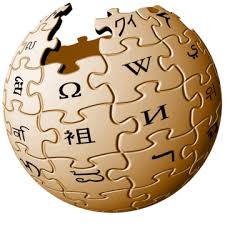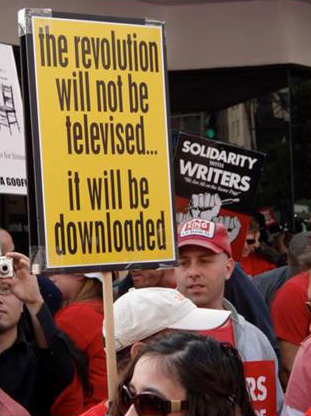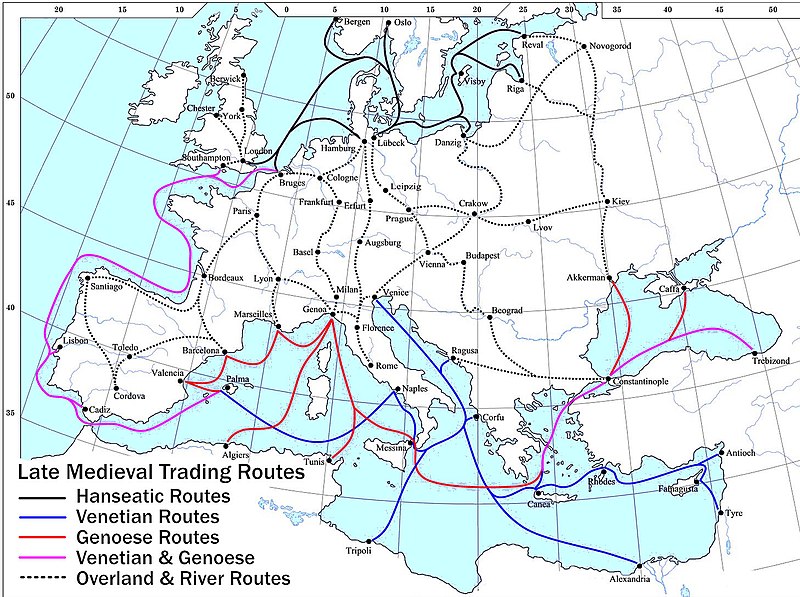 Republished at the P2P Foundation
Republished at the P2P FoundationHow can be explained peer-to-peer processes, the growth of Wikipedia in comparison with the Britannica Encyclopedia or the growing importance of Linux in contrast to Windows. Even the success of Google can be hardly explained within the classic economic paradigm.
The classic economic paradigm was tailored for industrial economies. Production was explained as the result of a given combination of capital and labour. But, can this two productive factors explain the productive process of peer-to-peer, Wikipedia, Linux, Google? Certainly they can be used in explaining the productive behaviour of a car-factory, a textile-production or a small regular shop of any possible kind, but the explanatory power of that paradigm is much lower when facing the productive processes present in many of the new economic productive entities that have appeared after the disruptive development of information technologies.
What is different? Highways vs rural paths.
How highways are produced can be easily explained in terms of the two single productive factors capital and labour. But is this explanation useful in explaining how a rural path is created? A rural path appears due to the repetitive use of a given route. The repetitive use of the route progressively eliminates vegetation establishing a marked track on the ground. If the path is not used enough, it just disappears. Obviously labour might have a role: a nearby village might reward a group of people to have some obstacles removed. Capital might also be relevant: a cliff might be avoided through the construction of a bridge. But the radical difference is that its production cannot be explained just through capital and labour. The production of a rural path could not possibly be explained without taking into account its mere use (consumption) as a productive factor.
Rural paths, P2P, Linux, Wikipedia and Google: why are they similar.
The so called new information technologies are characterized by network-effects and network externalities, this is, "wh en the value of a product to one user depends on how many other users there are, economists say that this product exhibits network externalities, or network effects" (Shapiro and Varian 1998, p.13)1. This idea was originally related to the economic analysis of communication services, telephone and fax being the typical case studies2. Indeed the utility of having a telephone is zero if anybody else has one, and utility increases as more people is connected. Similarly, the utility of a rural path increases as more users are connected through it. The argument is also valid for virtual networks such as Google, P2P software users, Wikipedia or Britannica, Linux or Windows and so on.
en the value of a product to one user depends on how many other users there are, economists say that this product exhibits network externalities, or network effects" (Shapiro and Varian 1998, p.13)1. This idea was originally related to the economic analysis of communication services, telephone and fax being the typical case studies2. Indeed the utility of having a telephone is zero if anybody else has one, and utility increases as more people is connected. Similarly, the utility of a rural path increases as more users are connected through it. The argument is also valid for virtual networks such as Google, P2P software users, Wikipedia or Britannica, Linux or Windows and so on.
There is however a subtle difference in how an extra user benefits the rest of the users in a telephone network or in a rural path:
"classic" network effect: like in the telephone network case, an extra user might benefit the rest of users of the rural path by expanding the network (so an extra user can be reached).
"peer-production effect": unlike the telephone case, this extra user collaborates with the maintenance/creation of the path by walking it.
Likewise a search in Google contributes to the production of Google´s searching engine3, reporting a mistake in Wikipedia improves it, reporting a bug in Linux helps debugging it, joining Bit-torrent network forces users to share files (at least those that are being downloaded4). Peer-production process are characterized by anti-rivalry (for a further analysis see), implying that even free-riders pose a positive effect on production (Raymond 2001, p.15, recasts the term free-riders into "outriders"), or more generally mere consumption entails a contribution to production, consumption becomes a productive factor.
"Peer-production effect": Consumption contribution to production as a comparative advantage
While for a highway to be built capital and labour are strictly necessary, for a rural path it is not the case, users are instead essential. Similarly, for Microsoft and Britannica Encyclopedia to deliver a new version of their product, labour needs to be recruited and capital resources obtained. They both benefit from net-work effects, but there is no "peer-production effect", anti-rivalry is not present. Differently in Linux and Wikipedia case, labour and capital requirements are softened by its ability to use users´ contributions in production5.
A rural path and a highway serve the same purpose in different ways, so usually usually there is no competition and each has its niche. However in the case of an encyclopedia (Britannica vs Wikipedia) or an operative system (Windows vs Linux), there is indeed competence6. Open source and some platforms such as Google benefit from user´s contribution while most proprietary platforms don´t.
Does peer-production pose a comparative advantage?
Could this explain the success of open platforms?
- More literature on the topic is provided by Varian, Farrel and Shapiro (2004, p.35-36). See Liebowitz and Margolis (1994) for some critical views.
- See Rohlfs (1974) for an early approach.
- See Benkler (2006, p.33), for instance.
- See Strumpf and Oberholzer-Gee (2010, p.10) for instance.
- Economides and Katsamakas find in "The Economics of Open Source Software Development" (2006) the conditions for which investment in open platforms (Windows vs Linux) is greater than in propietary platforms.
- See Bitzerand and Schröder (2006) in "The Economics of Open Source Software Development" (2006) , for instance.
Bibliography:
- Carl Shapiro y Hal R Varian, Information Rules: A Strategic Guide to the Network Economy, illustrated edition. (Harvard Business School Press, 1998).
- Hal R. Varian, Joseph Farrell, y Carl Shapiro, The economics of information technology (Cambridge University Press, 2004).
- Jeffrey Rohlfs, “A Theory of Interdependent Demand for a Communications Service,” The Bell Journal of Economics and Management Science 5, nº. 1 (Spring 1974): 16-37.
- S. J. Liebowitz y Stephen E. Margolis, “Network Externality: An Uncommon Tragedy,” The Journal of Economic Perspectives 8, nº. 2 (Spring 1994): 133-150.
- Yochai Benkler, The wealth of networks (Yale University Press, 2006).
- Felix Oberholzer‐Gee y Koleman Strumpf, “File Sharing and Copyright,” Innovation Policy and the Economy 10, nº. 1 (Enero 1, 2010): 19-55.
- Eric S. Raymond, The cathedral and the bazaar (O'Reilly Media, Inc., 2001).
- Jürgen Bitzer y Philipp J.H. Schröder, The Economics of Open Source Software Development, 1º ed. (Elsevier Science, 2006).




















